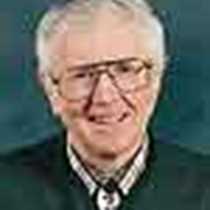Snake and Clearwater Rivers
Our guests chose today between a guided journey of Lewis and Clark encampments in the Clearwater River heartland of the Nez Perce people or a jet boat trip 60 miles upstream into the heart of Hells Canyon.
A 50-foot aluminum sled (powered by twin jets of water) slipped alongside Sea Lion’s dock in Clarkston, Washington, for boarding. Meanwhile Linwood (Lin) Loughay, local historian and author, met those who chose an onsite bus and walking visit to camps and events so well described in the Lewis and Clark journals.
The swift sled carried us to the heart of Hell’s Canyon where the river drops ten feet per mile. We surmounted class three rapids and a narrows where the river squeezed through a 70-foot wide gap. Above soaring rims and bunchgrass basins we saw bighorn rams, a golden eagle and mule deer.
Proud anglers, on guided trips in jet boats for parties of four or six, displayed their steelhead. These migratory rainbow trout journeyed 500 miles up the Columbia and Snake rivers from the rich pastures of the sea. They will winter here and spawn next spring. They left this river as 7 to 9-inch smolts two years ago and now weigh between 6 and 14 or more pounds.
At the entry to Hell’s Canyon National Recreation Area we docked at the U.S. Forest Service Cache Creek Ranger Station. From there on the river has national wild and scenic designation and is surrounded by wilderness. Cache Creek was previously an isolated homestead like many scattered through the canyon. Access was only by horse and mule pack trail or a mail boat. This cabin includes a display from days when sheep men ranged their bands from riverside benches where they lambed in March, and on up to 7,000 ft elevation during their summer range.
Miners probed for gold and copper veins and left their old tunnels. Bands of Chinese worked sluice boxes. This homestead is on a bench watered by Cache Creek, so it had a garden. And its grove of peach, plum, cherry, apple and fig trees still produces, and it's an attraction to black bear and deer. A large storage cellar was dug into the hillside, formed with stone walls and then heaped with earth and sod to counter the blazing canyon heat of summer.
Both of our adventuring parties joined at day’s end in the Nez Perce Cultural Center at Lapwai, ID. Here they examined the regalia of the tribe knows as “the dress-up Indians” because of their pride and skill in decking out themselves and their horses. This priceless collection is pre 1840’s or prior to the onrush of trade goods, miners and settlers.
Our guests chose today between a guided journey of Lewis and Clark encampments in the Clearwater River heartland of the Nez Perce people or a jet boat trip 60 miles upstream into the heart of Hells Canyon.
A 50-foot aluminum sled (powered by twin jets of water) slipped alongside Sea Lion’s dock in Clarkston, Washington, for boarding. Meanwhile Linwood (Lin) Loughay, local historian and author, met those who chose an onsite bus and walking visit to camps and events so well described in the Lewis and Clark journals.
The swift sled carried us to the heart of Hell’s Canyon where the river drops ten feet per mile. We surmounted class three rapids and a narrows where the river squeezed through a 70-foot wide gap. Above soaring rims and bunchgrass basins we saw bighorn rams, a golden eagle and mule deer.
Proud anglers, on guided trips in jet boats for parties of four or six, displayed their steelhead. These migratory rainbow trout journeyed 500 miles up the Columbia and Snake rivers from the rich pastures of the sea. They will winter here and spawn next spring. They left this river as 7 to 9-inch smolts two years ago and now weigh between 6 and 14 or more pounds.
At the entry to Hell’s Canyon National Recreation Area we docked at the U.S. Forest Service Cache Creek Ranger Station. From there on the river has national wild and scenic designation and is surrounded by wilderness. Cache Creek was previously an isolated homestead like many scattered through the canyon. Access was only by horse and mule pack trail or a mail boat. This cabin includes a display from days when sheep men ranged their bands from riverside benches where they lambed in March, and on up to 7,000 ft elevation during their summer range.
Miners probed for gold and copper veins and left their old tunnels. Bands of Chinese worked sluice boxes. This homestead is on a bench watered by Cache Creek, so it had a garden. And its grove of peach, plum, cherry, apple and fig trees still produces, and it's an attraction to black bear and deer. A large storage cellar was dug into the hillside, formed with stone walls and then heaped with earth and sod to counter the blazing canyon heat of summer.
Both of our adventuring parties joined at day’s end in the Nez Perce Cultural Center at Lapwai, ID. Here they examined the regalia of the tribe knows as “the dress-up Indians” because of their pride and skill in decking out themselves and their horses. This priceless collection is pre 1840’s or prior to the onrush of trade goods, miners and settlers.




